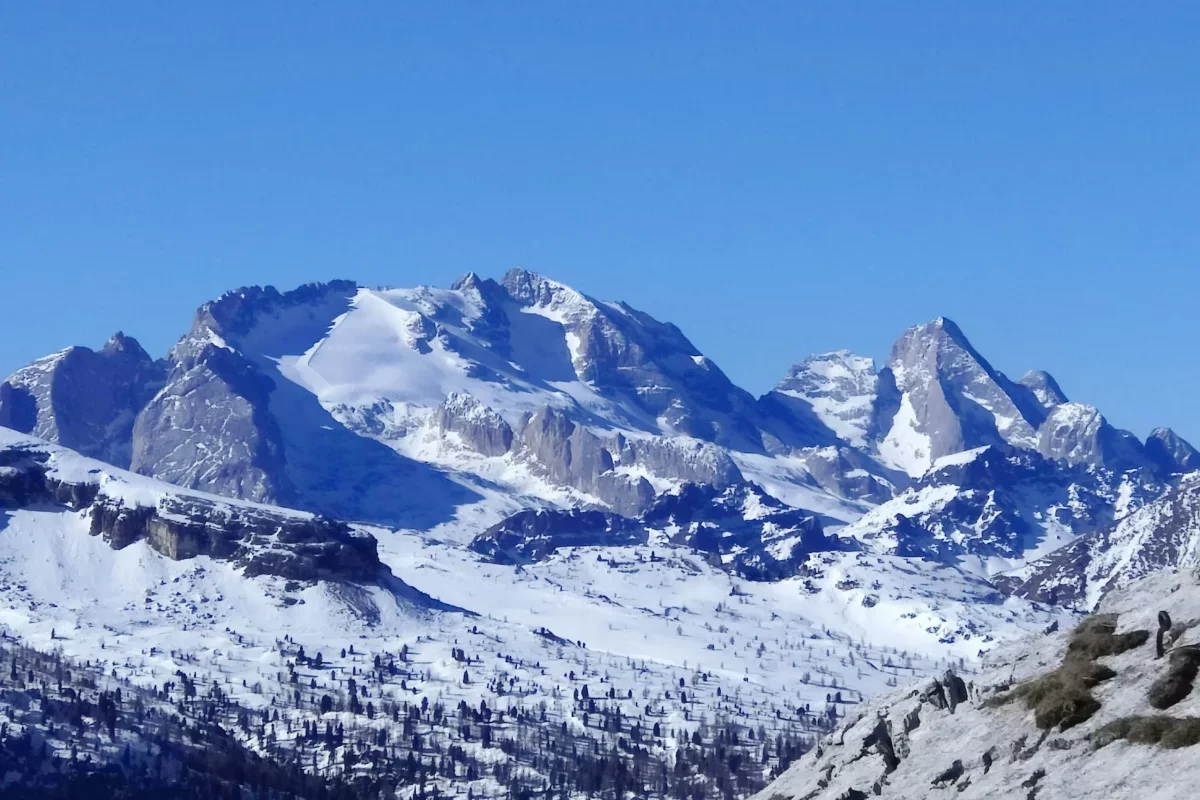Rapid melting caused by climate change is threatening the very existence of the Marmolada Glacier, the largest in Italy’s Dolomite Mountains. A new study has projected its complete disappearance by 2040.
Having lost 80% of its surface area since 1888, the Marmolada Glacier, affectionately known as the Queen of the Dolomite, is on the brink of extinction.
Experts studying the region describe the glacier as being in an “irreversible coma”, and point to the devastating impact of climate change as the culprit.
According to research conducted by a joint task force of eco-organisation Legambiente, the International Commission for the Protection of the Alps (Cipra) and the Italian Glacier Committee, this iconic glacier is losing seven to 10cm of ice every day. In the past five years, an area equivalent to 98 football pitches of the glacier has melted away.
Furthermore, since the first scientific measurements of the glacier were taken in 1888, the Marmolada ice cap has retreated by 1,200 metres.
IRREVERSIBLE DAMAGE
Long a favourite of skiers and climbers, today’s Marmolada is clearly suffering under the immense pressures of environmental and climatic change.
The project, Carovana dei Ghiacciai (Caravan of Glaciers in English), has been observing the glaciers, with special attention given to the Marmolada since the July 2022 ice collapse that claimed the lives of 11 mountaineers.
Efforts to save the glacier with reflective sheets designed to slow melting have been criticised by the task force as being self-serving last-ditch attempts by local ski resorts to protect their livelihoods. They argue that these measures are ineffective.
“The Marmolada glacier is dying, and covering it with sheets is therapeutic obstinacy aimed solely at protecting the ski slopes,” a spokesperson for Legambiente said in a press conference, before adding that ice mass is now in an “irreversible coma” from which it may never recover.
The study produced by the team also indicates that other European glaciers could face similar, disastrous futures.
“The data makes [the Marmolada] emblematic of the suffering of all Alpine glaciers—the glacial body is poorly fed and suffers from climatic pressure and human interference,” said Marco Giardino, the president of the Italian Glaciological Committee.
The fate of the Queen of the Dolomites
Increasing attention has been given to the glacial zone since a portion of the Marmolada collapsed in July 2022, a tragic incident that claimed the lives of 11 mountaineers.
Its likely fate underscores the broader, devastating impacts of climate change on glacial ecosystems worldwide. Despite efforts to mitigate the damage, the rapid retreat of the ice and the irreversible condition of this popular glacier signal the urgent need for stronger global environmental policies. The Marmolada may serve as a stark reminder of what is at stake—not just for Italy’s glaciers, but for the world’s natural heritage.
Read related:
Rising global temperatures threatening the future of Europe’s ski industry
Monaco Life is produced by real multi-media journalists writing original content. See more in our free newsletter, follow our Podcasts on Spotify, and check us out on Threads, Facebook, Instagram, LinkedIn and Tik Tok.
Photo source: Dario Morandotti, Unsplash
